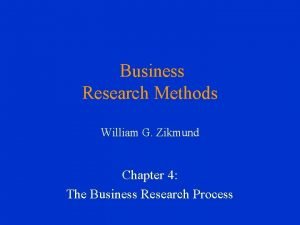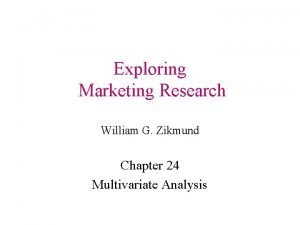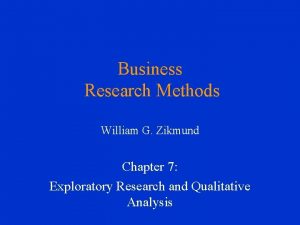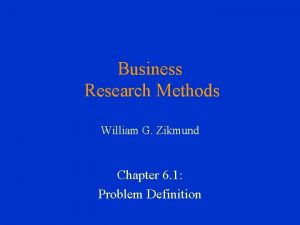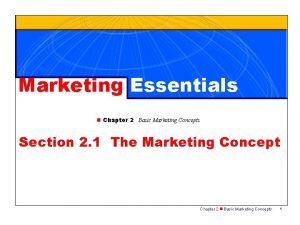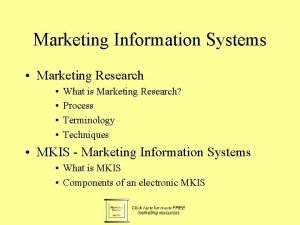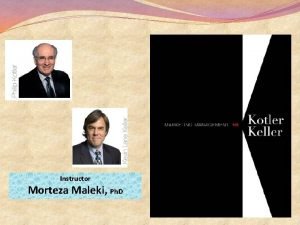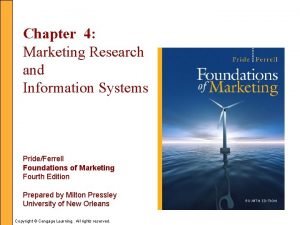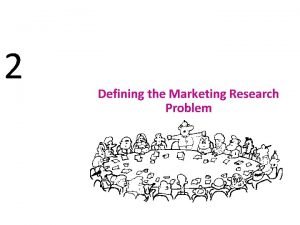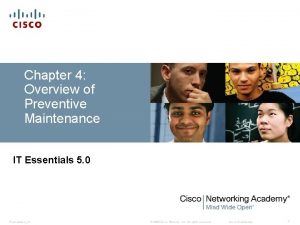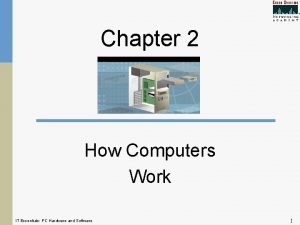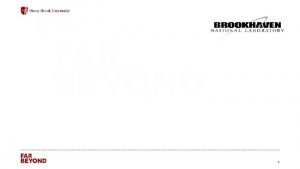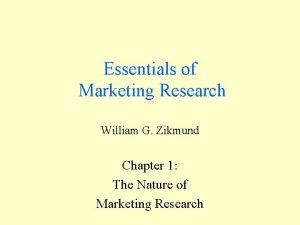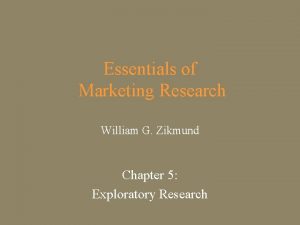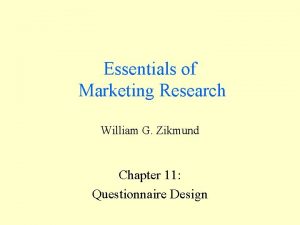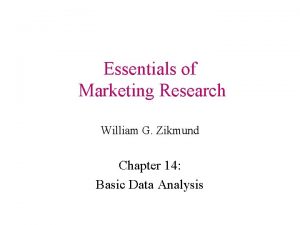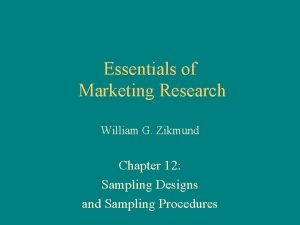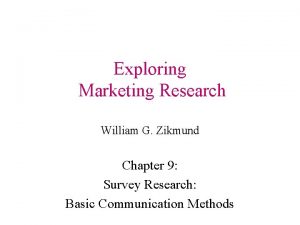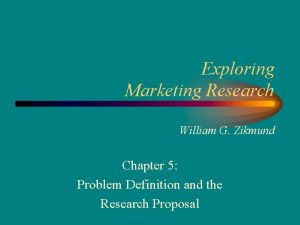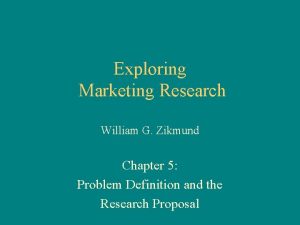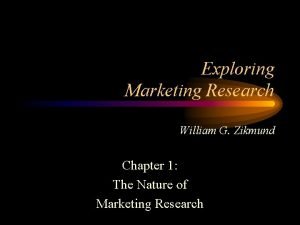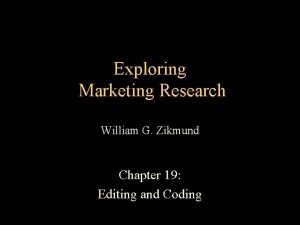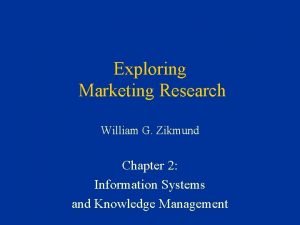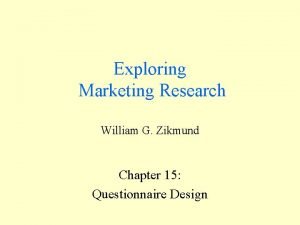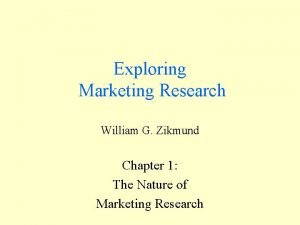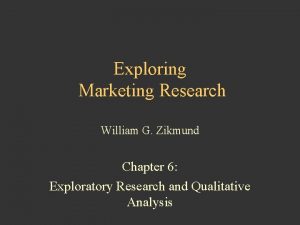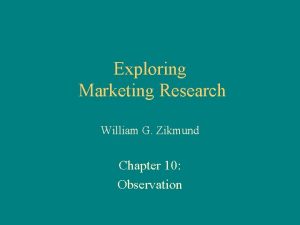Essentials of Marketing Research William G Zikmund Chapter















































- Slides: 47

Essentials of Marketing Research William G. Zikmund Chapter 3: The Marketing Research Process

Information • Reduces uncertainty • Helps focus decision making

Types Of Research • Exploratory • Descriptive • Causal

Uncertainty Influences The Type Of Research CAUSAL OR DESCRIPTIVE COMPLETELY CERTAIN ABSOLUTE AMBIGUITY EXPLORATORY

Degree of Problem Definition possible situation Exploratory Research (Unaware of Problem) Defined) Descriptive Research (Aware of Problem) Causal (Problem Clearly “Our sales are declining and “What kind of people are buying “Will buyers purchase more of we don’t know why. ” our product? Who buys our products in a new package? competitor’s product? ” “Would people be interested “Which of two advertising in our new product idea? ” “What features do buyers prefer campaigns is more effective? ” in our product? ”

Exploratory Research • Initial research conducted to clarify and define the nature of a problem • Does not provide conclusive evidence • Subsequent research expected

Descriptive Research • Describes characteristics of a population or phenomenon • Some understanding of the nature of the problem

I keep six honest serving men, (they taught me all I knew), their names are what, and why, and when, and how, and where and who. ” --Rudyard Kipling 8

Descriptive Research Example • • • Weight Watchers average customer Woman about 40 years old Household income of about $50, 000 At least some college education Trying to juggle children and a job

Descriptive Research Example • • Men’s fragrance market 1/3 size of women’s fragrance market But growing at a faster pace Women buy 80 % of men’s fragrances

Causal Research • Conducted to identify cause and effect relationships

Identifying Causality • A causal relationship is impossible to prove. • Evidence of causality: – 1. The appropriate causal order of events – 2. Concomitant variation--two phenomena vary together – 3. An absence of alternative plausible explanations

Stages of the Research Process Problem Discovery and Definition Research Design Discovery and Definition and so on Conclusions and Report Sampling Data Processing and Analysis Data Gathering

Research Stages • Cyclical process - conclusions generate new ideas • Stages can overlap chronologically • Stages are functionally interrelated – Forward linkages – Backward linkages

Problem discovery Problem Discovery and Definition Selection of exploratory research technique Sampling Selection of exploratory research technique Secondary (historical) data Experience survey Pilot study Probability Nonprobability Case study Data Gathering Data Processing and Analysis Problem definition (statement of research objectives) Experiment Laboratory Field Conclusions and Report Survey Interview Editing and coding data Data processing Selection of basic research method Research Design Collection of data (fieldwork) Questionnaire Observation Secondary Data Study Interpretation of findings Report

The Marketing Research Process Problem Discovery Selection of Sample Design Exploratory Research Collection of the Data Selection of the Basic Research Method

The Research Process (cont. ) Editing and Coding Data Processing Interpretation of the Findings Report

Stages In The Research Process • • • Problem Discovery and Problem Definition Research Design Sampling Data Gathering Data Processing and Analysis Conclusions And Report

Problem Discovery And Definition • First step • Problem, opportunity, or monitor operations • Discovery before definition • Problem means management problem

“The formulation of the problem is often more essential than its solution” Albert Einstein

STAGE 1: Defining the Problem Results in Clear Cut Research Objectives Symptom Detection Analysis of the Situation Problem Definition Statement of Research Objectives Exploratory Research (Optional)

The Process of Problem Definition Ascertain Understand Isolate and Determine the identify the unit the decision background problems, of analysis relevant of the maker’s not the variables objectives. problem. symptoms. State the research questions and research objectives.

Ascertain the Decision Maker’s Objectives 23

Understand the Background of the Problem 24

Isolate and Identify the Problems, Not the Symptoms 25

The Iceberg Principle 26

Organization Twenty-year-old neighborhood swimming association in a major city. Symptoms Membership has been declining for years. New water park with wave pool and water slides moved into town a few years ago. Problem Definition Based on Symptom True Problem Neighborhood residents prefer the expensive water park and have negative image of swimming pool. Demographic changes: Children in this 20 -year -old neighborhood have grown up. Older residents no longer swim anywhere.

Determine the Unit of Analysis • Individuals, households, organizations, etc. • In many studies, the family rather than the individual is the appropriate unit of analysis. 28

Determine the Relevant Variable • Anything that may assume different numerical values 29

Types of Variables • • Categorical Continuous Dependent Independent

Hypothesis • An unproven proposition • A possible solution to a problem • Guess

State the research questions and research objectives 32

If you do not know where you are going, any road will take you there.

Exploratory Research Techniques • Secondary data (historical data) • Pilot study • Experience survey

Focus Group Interview

Experience Survey

“If you wish to know the road up the mountain, you must ask the man who goes back and forth on it. ” -- Zenrinkusi 37

Specific objective - 1 Statement of marketing problem Exploratory research (optional) Broad research objectives Specific objective - 2 Specific objective - 3 Research design Results

Research Design • Master Plan • Framework For Action • Specifies Methods And Procedures

Basic Research Methods • • Surveys Experiments Secondary data Observation

Sampling • • Subset of population Who is to be sampled How large a sample How will sample units be selected

Data Gathering Stage

Data Processing and Analysis

Conclusions And Report Writing

Research Proposal • A written statement of the research design that includes a statement explaining the purpose of the study. • Detailed outline of procedures associated with a particular methodology

Research Program Strategy

 Business research methods by zikmund
Business research methods by zikmund Exploring marketing research zikmund
Exploring marketing research zikmund Exploring marketing research zikmund
Exploring marketing research zikmund William g. zikmund
William g. zikmund Business research methods by zikmund
Business research methods by zikmund Zikmund business research methods
Zikmund business research methods Zikmund scale
Zikmund scale Zikmund lucemburský
Zikmund lucemburský Marketing essentials chapter 38
Marketing essentials chapter 38 Chapter 13 initiating the sale
Chapter 13 initiating the sale How is form utility not related to marketing
How is form utility not related to marketing Essentials of social media marketing chapter 9 quiz
Essentials of social media marketing chapter 9 quiz Marketing essentials chapter 2
Marketing essentials chapter 2 Network security essentials 5th edition pdf
Network security essentials 5th edition pdf Network security essentials william stallings ppt
Network security essentials william stallings ppt Essentials of health care marketing
Essentials of health care marketing Chapter 12 preparing for the sale
Chapter 12 preparing for the sale Finer segmentation strategy
Finer segmentation strategy Marketing information systems and marketing research
Marketing information systems and marketing research Marketing information systems and marketing research
Marketing information systems and marketing research Marketing information systems and marketing research
Marketing information systems and marketing research Marketing information system kotler
Marketing information system kotler Marketing information systems and marketing research
Marketing information systems and marketing research Marketing research problem definition
Marketing research problem definition It essentials chapter 8
It essentials chapter 8 What are the ten essentials of a successful ffa chapter
What are the ten essentials of a successful ffa chapter It essentials chapter 9
It essentials chapter 9 Ite chapter 14
Ite chapter 14 It essentials chapter 12 quiz
It essentials chapter 12 quiz It essential chapter 11
It essential chapter 11 Business essentials 12th edition chapter 1
Business essentials 12th edition chapter 1 It essentials chapter 5
It essentials chapter 5 It essentials chapter 3
It essentials chapter 3 It essentials chapter 11
It essentials chapter 11 It essentials chapter 7
It essentials chapter 7 It essentials chapter 6
It essentials chapter 6 It essentials chapter 5
It essentials chapter 5 It essentials chapter 4
It essentials chapter 4 Math is the foundation of the kitchen and the back office
Math is the foundation of the kitchen and the back office It essentials chapter 2
It essentials chapter 2 It essentials chapter 5
It essentials chapter 5 It essentials chapter 3
It essentials chapter 3 It essentials chapter 10
It essentials chapter 10 It essentials chapter 10
It essentials chapter 10 Ad altare dei answers
Ad altare dei answers It essentials chapter 4
It essentials chapter 4 It essentials chapter 7
It essentials chapter 7 What are the ten essentials of a successful ffa chapter
What are the ten essentials of a successful ffa chapter
